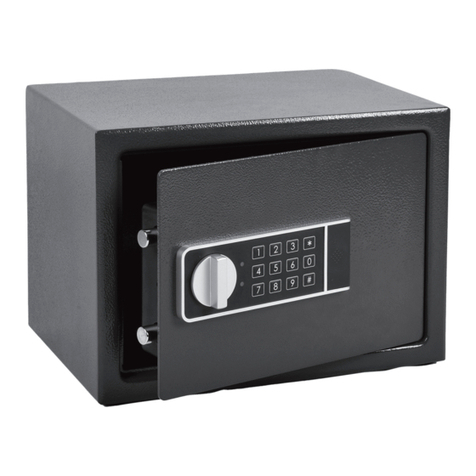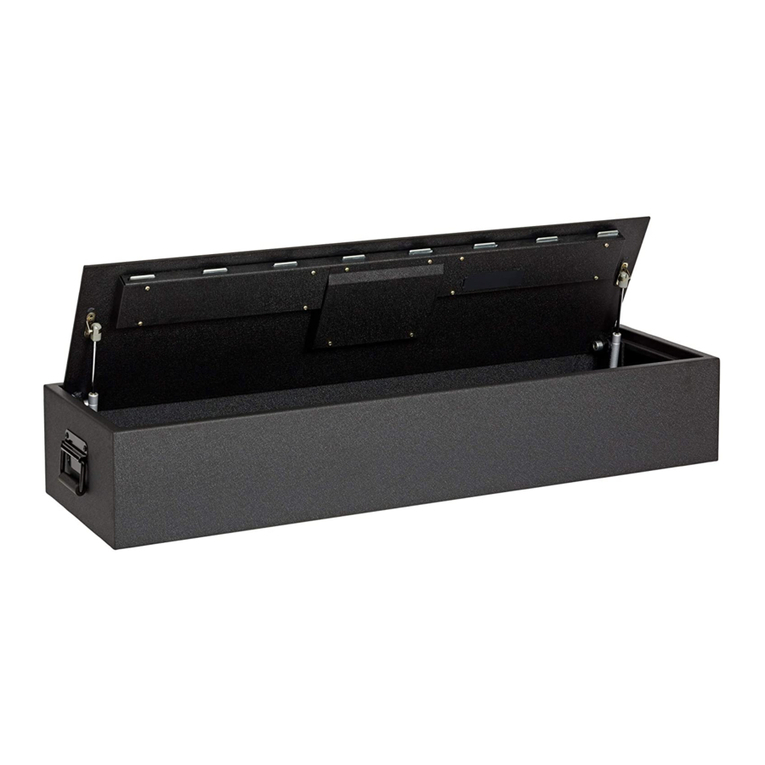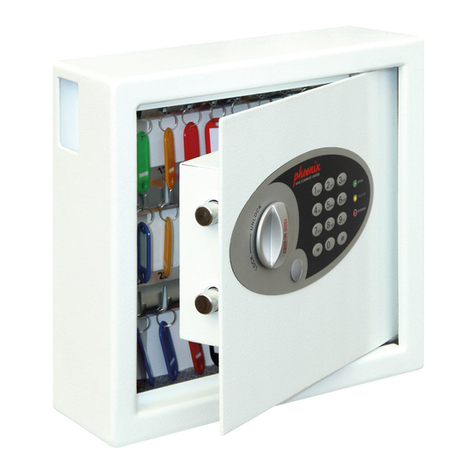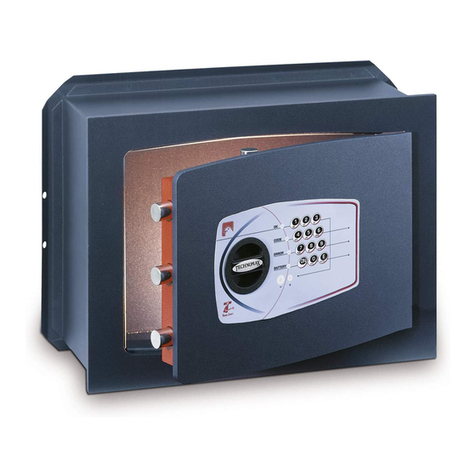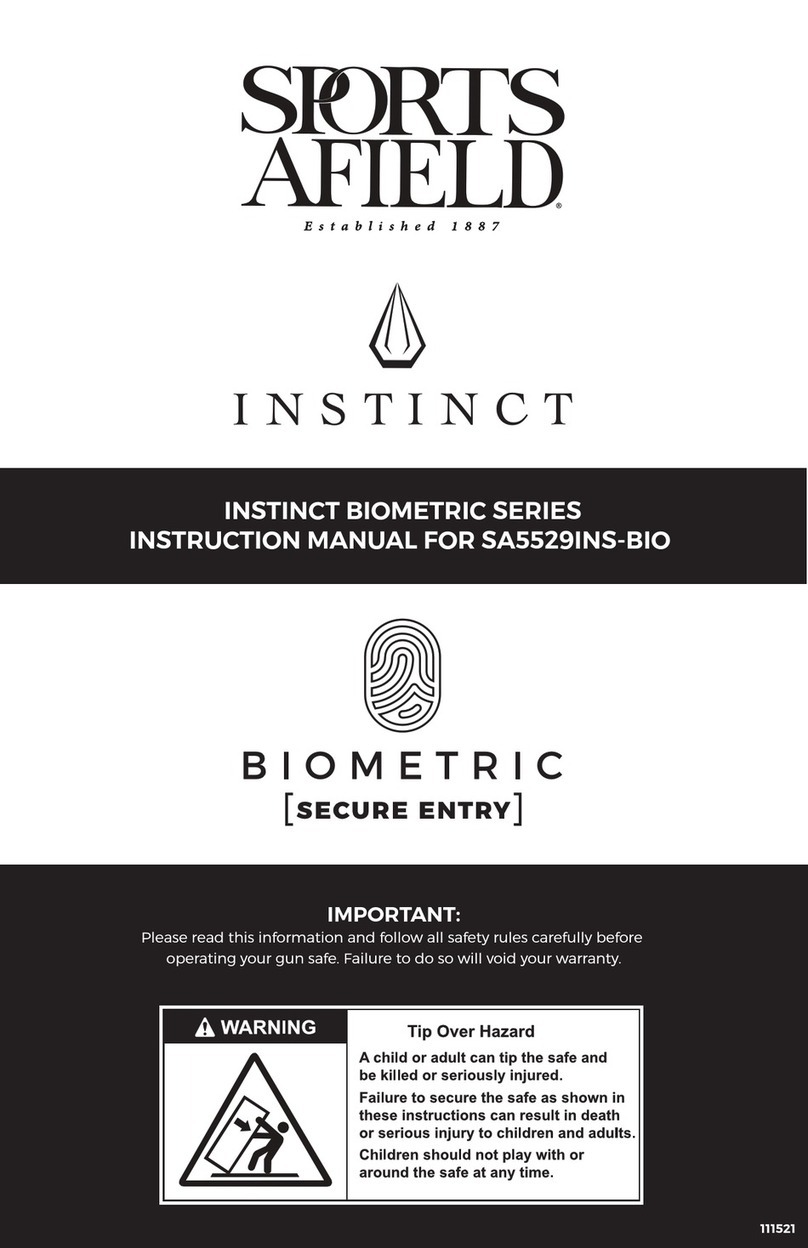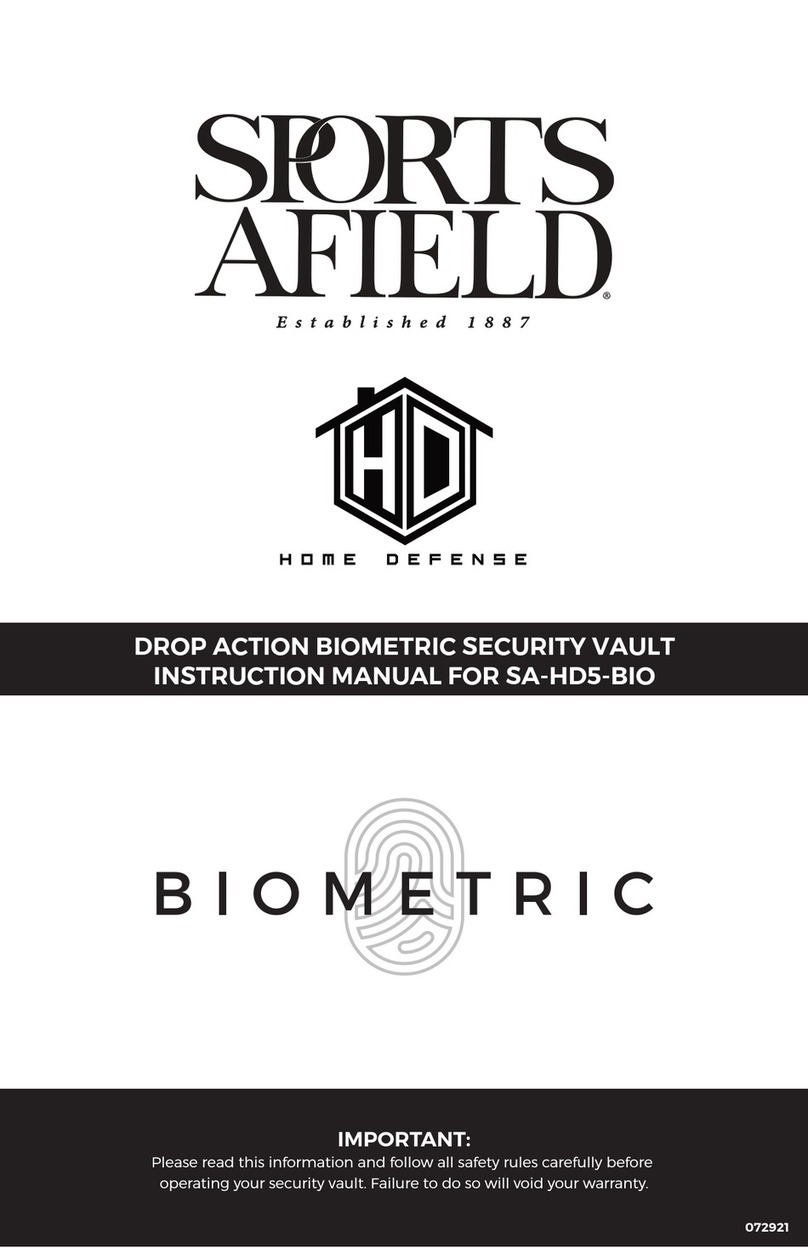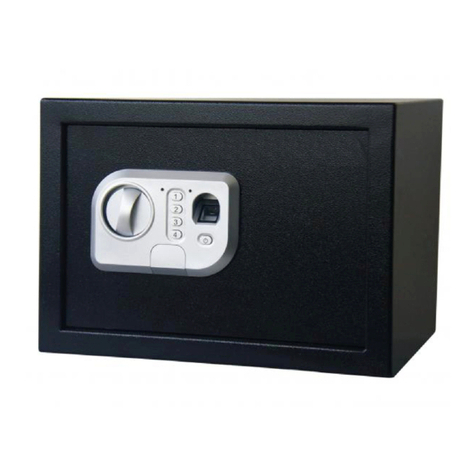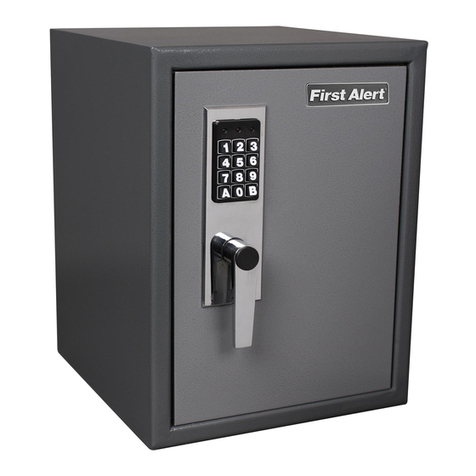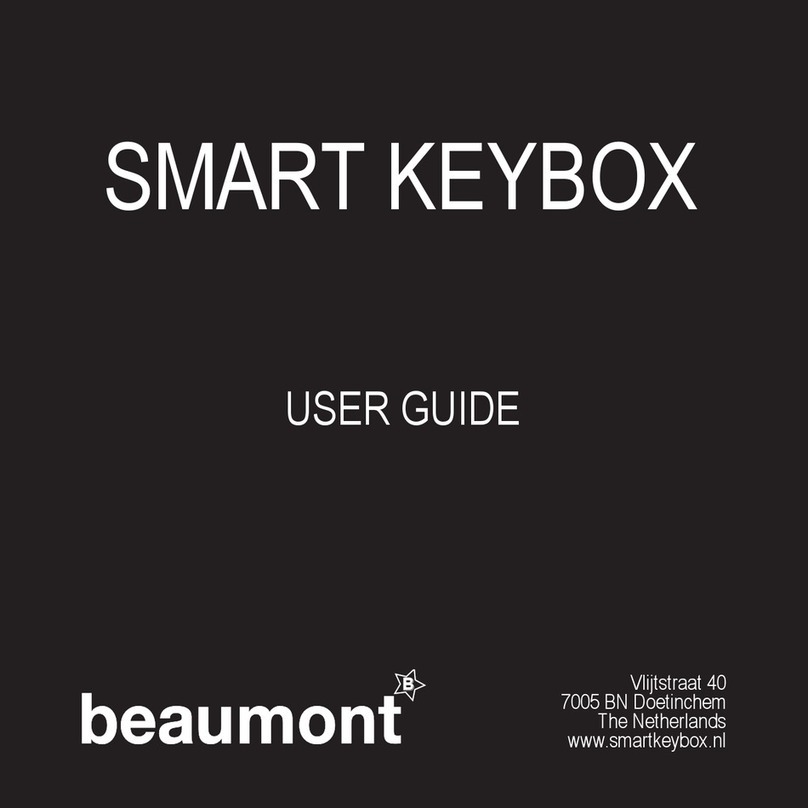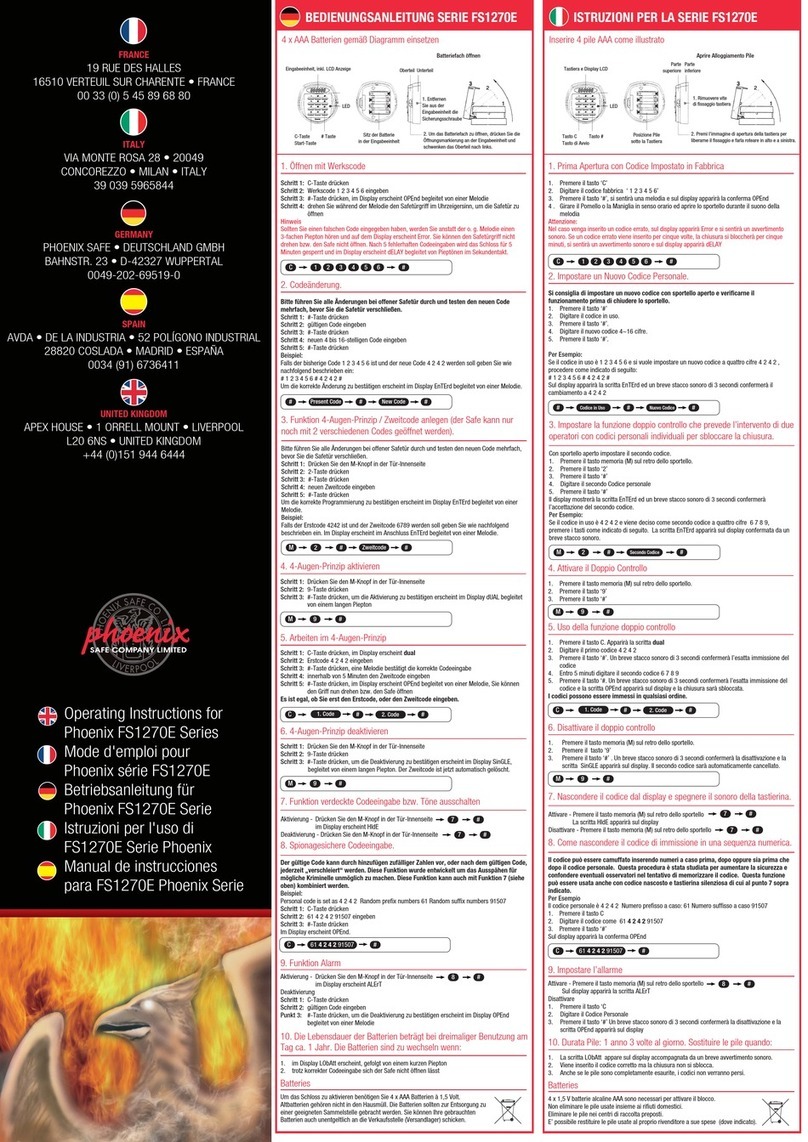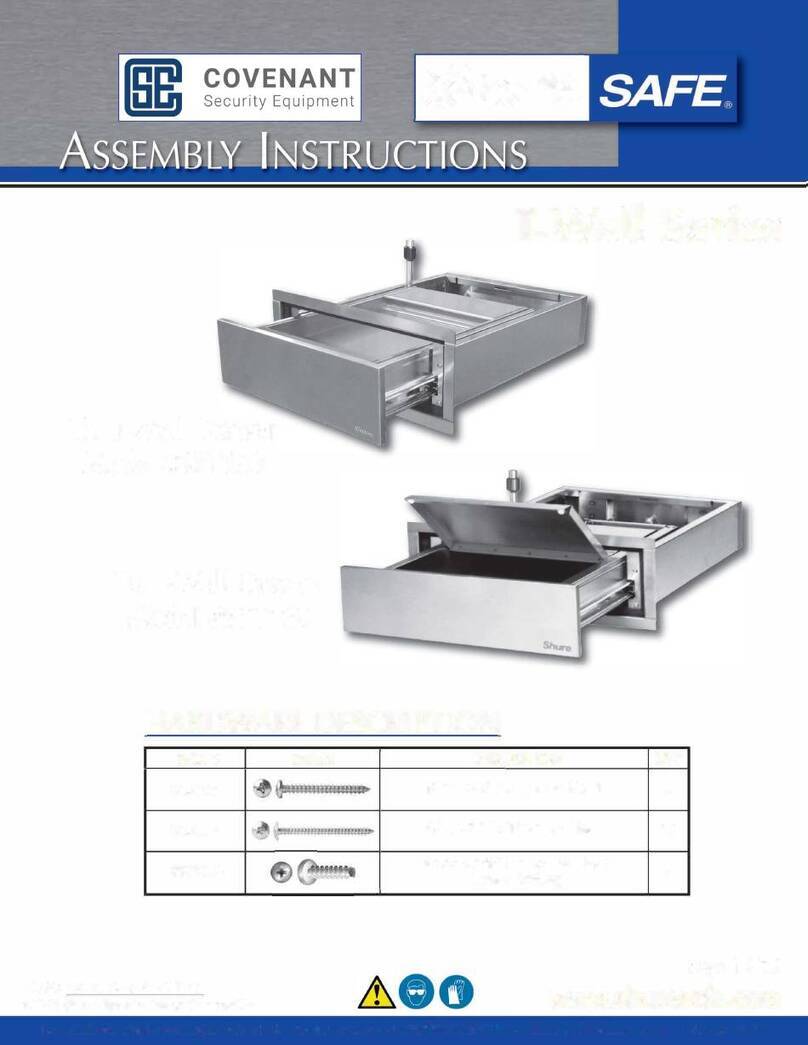Operation - opening
Opening of a safe fitted with a key lock only:
1. Insert the key into the lock hole.
2. Turn the key by over 90 (over 1/4 of a turn) clockwise, resistance indicates that the lock is open,
the key must remain in the lock (the key lock design prevents the key from being removed when
the lock is in open position).
3. Turn the handle clockwise.
4. Pulling the door opens the safe.
Opening of safes fitted with combination or electronic lock:
1. Open the combination/ electronic lock following the steps described in the enclosed lock’s
operation manual.
2. Turn the handle clockwise.
3. Pulling the door opens the safe.
Opening of safes fitted with key and combination lock or electronic lock:
1. Insert the key into the lock hole.
2. Turn the key by over 90°(over 1/4 of a turn) clockwise, resistance indicates that the lock is open,
the key must remain in the lock (the key lock design prevents the key from being removed when
the lock is in open position).
3. Open the combination/ electronic lock following the steps described in the enclosed lock’s
operation manual.
4. Turn the handle clockwise.
5. Pulling the door opens the safe.
Opening of safes fitted with two key locks:
1. Insert the key into the first lock hole.
2. Turn the key by over 90 (over 1/4 of a turn) clockwise, resistance indicates that the lock is open,
the key must remain in the lock (the key lock design prevents the key from being removed when
the lock is in open position).
3. Open the second lock proceeding as above.
4. Turn the handle clockwise.
5. Pulling the door opens the safe.
Operation - closing
Closing of a safe fitted with a key lock only:
1. Close the door by pressing it against the body (door bolts must be concealed).
2. Turn the handle anti-clockwise.
3. Turn the key by over 90 (over 1/4 of a turn) anticlockwise, resistance indicates that the safe is
locked.
4. Remove the key.
Closing of safes fitted with a combination or electronic lock only:
1. Close the door by pressing it against the body (door bolts must be concealed).
2. Turn the handle anti-clockwise.
3. Close the combination/ electronic lock following the steps described in the enclosed lock’s operation
manual, the safe is closed.
Closing of safes fitted with key and combination lock or electronic lock:
1. Close the door by pressing it against the body (door bolts must be concealed).
2. Turn the handle anti-clockwise.
3. Turn the key by over 90 (over 1/4 of a turn) anticlockwise, resistance indicates that the safe is
locked.
